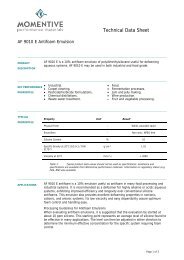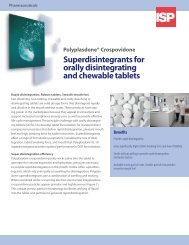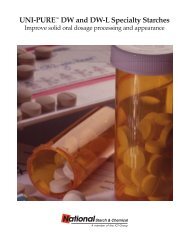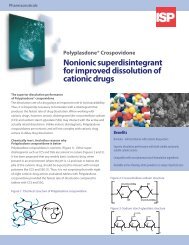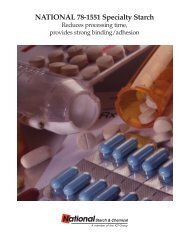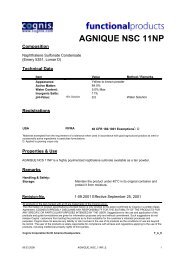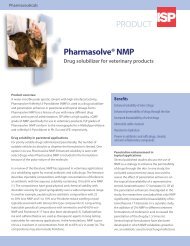Inert Lubricants Oils – Greases – Waxes - Anshul Life Sciences
Inert Lubricants Oils – Greases – Waxes - Anshul Life Sciences
Inert Lubricants Oils – Greases – Waxes - Anshul Life Sciences
You also want an ePaper? Increase the reach of your titles
YUMPU automatically turns print PDFs into web optimized ePapers that Google loves.
Physical Properties<br />
As the viscosity of the Halocarbon oils increase, so does the density, pour point and cloud<br />
point. Table 3 (p. 7) lists these and other physical properties. The vapor pressure is inversely<br />
related to viscosity of the oil, as shown in Figure 1 (p. 9). The viscosity of an oil decreases<br />
with temperature as shown in Figure 2 (p. 10). These data will help choose the appropriate<br />
oil for a particular application.<br />
The polymers change from oils to waxes as the viscosity increases. The waxes are all white<br />
solids at room temperature that melt upon heating. They have initial boiling points above<br />
260°C (500°F) and densities of about 1.89 g/mL at 99°C (210°F). Drop melting point and<br />
viscosity data are given in Table 4 (p. 7).<br />
The properties of Halocarbon greases depend upon how heavily they are gelled. Table 5 (p. 8)<br />
gives penetration, service temperature range and drop melting point data.<br />
Solubility of Halocarbon Fluids in Other Solvents<br />
The lower viscosity Halocarbon oils are soluble in most organic liquids but solubility<br />
decreases as viscosity increases. All Halocarbon fluids are insoluble in aqueous solutions<br />
however stable emulsions are possible with fluorinated surfactants.<br />
Solubility of Other Substances in Halocarbon Fluids<br />
Halocarbon fluids will dissolve halogens and volatile anhydrous inorganic salts (such as<br />
titanium tetrachloride). Typical organic materials with which various Halocarbon oils are<br />
miscible are:<br />
Acetone<br />
Amyl acetate<br />
Benzene<br />
n-Butyl alcohol<br />
Carbon disulfide<br />
Dioctyl phthalate<br />
Dioctyl sebacate<br />
Ethanol<br />
Ether<br />
Glacial acetic acid<br />
Hexane<br />
Isopropyl alcohol<br />
Kerosene<br />
Methanol<br />
Methyl ethyl ketone<br />
Methyl isobutyl ketone<br />
Methylene chloride<br />
Mineral oils<br />
Silicone oils<br />
Tetrachloroethylene<br />
Trichloroethylene<br />
back to Contents<br />
6



